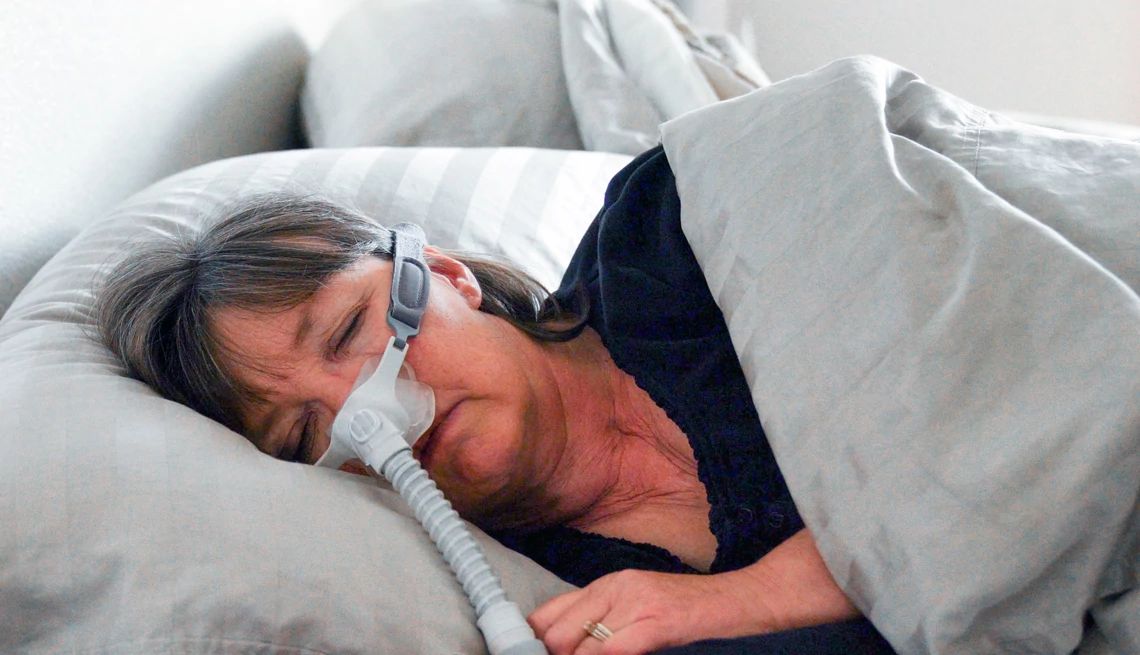AARP Hearing Center


Peggy Rucinski remembered the countless nights over the years when she had listened to her husband David snoring, then suddenly stopping, only to resume snoring again after a terrifying pause. His snoring had always been annoying, but the pauses and gasps truly scared her.
She said it started suddenly one morning when David complained that he felt extremely tired because he had slept poorly.


AARP Membership— $12 for your first year when you sign up for Automatic Renewal
Get instant access to members-only products and hundreds of discounts, a free second membership, and a subscription to AARP the Magazine.
In addition to David’s disturbed sleep, Peggy experienced something more frightening —her husband sometimes had episodes of confusion.
“He scared me because he couldn’t remember things we had just talked about at breakfast. Then he couldn’t remember what our daughters did or where they lived. However, he did know me, his phone number and how to use the computer, etc. I was terrified that he was going into dementia.”
David saw a cardiologist, neurologist and endocrinologist and had an MRI and two EEGs. All the tests came back normal. Over the course of the year David had five episodes of amnesia — one about every eight weeks. Each one lasted about 24 hours, and although David recovered from them, he had no recollection of the episode or what happened during that time.
“Dave, the love of my life, began having episodes of forgetfulness and confusion on a regular basis,” Peggy said.
Finally, David had an appointment with a neurologist who asked about sleep patterns. David told him that in the 90s, he was diagnosed with severe sleep apnea and was prescribed a continuous positive airway pressure (CPAP) machine that uses mild air pressure to keep a person’s breathing airways open while they sleep. The neurologist felt that apnea was causing the problem.
Understanding sleep apnea
Patients with sleep apnea experience the full or partial collapse of the breathing tube that leads to complete or partial termination of breathing.
Two Types of Sleep Apnea
- Obstructive sleep apnea: The most common type; your upper airway becomes blocked many times while you sleep, reducing or completely stopping airflow.
- Central sleep apnea: With this condition, your brain does not send the signals needed to breathe. Certain health problems, such as heart failure and stroke, can affect how your brain controls your chest muscles. Sleeping at a high altitude is another possible cause.
Sources: National Institutes of Health and Mayo Clinic
The increased levels of carbon dioxide and the low concentration of oxygen in these patients can lead to high blood pressure, heart disease and even increased risk of premature death. In addition to snoring sleep apnea is linked to mood disorders, disruptive behavior and a decreased quality of life.
Approximately 39 million U.S. adults have obstructive sleep apnea (OSA). Despite its prevalence, as many as 80 percent of cases go undiagnosed, leaving millions of people at risk of serious health complications.
David tried using a CPAP machine. He struggled with three different types and finally gave up. Since CPAP was not an option for David, his primary care physician discussed other options.































































More From AARP
Newer Smartwatches Can Alert on Symptoms of Sleep Apnea
FDA OKs software that measures breathing interruptionsCould This 3-Ingredient Mocktail Help You Sleep?
What science says about the sleepy girl mocktailWake Up More Refreshed With Our Smart Guide to Sleep
43 tips to help you fight those restless, endless nights and get the slumber you need
Recommended for You